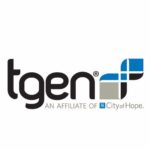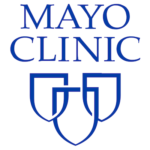The Extracellular RNA Communication Consortium (ERCC) has developed a Virtual Biorepository (VBR) to facilitate the sharing of biological materials between researchers. As of September 1, 2017, the VBR hub is now available for use by the global extracellular RNA research community (both ERCC and non-ERCC members) at https://genboree.org/vbr-hub. This Phase 1 (beta) release currently provides access to metadata on more than 10,000 biosamples. Specifically, there are 7,651 cerebrospinal fluid (CSF) and 2,356 hepatobiliary samples from the Translational Genomics Research Institute, Phoenix Children’s Hospital, Oregon Health and Science University, and the University of California, San Diego. Another 50,000 hepatobiliary samples from the Mayo Clinic are planned to be available before the end of 2017. Most participant institutions have agreed to a common framework for biosample exchange, including common Institutional Review Board (IRB) protocols and Material Transfer Agreements (MTA).
The Virtual Biorepository originally arose from the needs of investigators within the ERC consortium to share biofluid samples across institutions for the purpose of collaborative protocol development and biomarker discovery. To enable efficient sample sharing, the ERCC Resource Sharing Working Group worked with the Data Coordination Center (DCC) and Administrative Core to initiate VBR development. The initial goal was to enable the sharing of cerebrospinal fluid (CSF) samples among members of the ERCC-based CSF consortium. The types of shared resources available in the VBR have since extended to include hepatobiliary samples, tissue, cell, and macromolecular samples, and even sample slides. These resources may be useful for catalyzing collaborations during the next stage of the Extracellular RNA Communication project.
The VBR is a distributed database system consisting of a hub and a set of local or cloud-hosted nodes. The VBR hub provides an overview of the types and number of biosamples present at the nodes. The hub supports sample queries based on consortium (CSF, hepatobiliary), institution, and on publicly shared metadata about anonymized VBR biosamples, including clinical, radiographic, pathologic, and accession metadata. Lists of samples that satisfy search criteria are placed in a shopping cart for ordering from sample providers. Search criteria and results can be saved for later retrieval and modification. In the current implementation phase (Phase 1) of the biorepository, after selecting samples, researchers communicate directly with each other to make specific arrangements for sharing biosamples. Future improvements (Phase 2) of the shopping cart feature will allow end-to-end tracking of the biosample ordering and exchange process.
VBR nodes are set up independently of the hub and are under the control of sample providers. The ERCC DCC provides assistance regarding maintenance of data within individual VBR nodes using pre-defined metadata templates. Investigators potentially interested in setting up a VBR node to share metadata about their samples may contact the VBR administrator (thistlew@bcm.edu).

|
 |
 |
 |
 |
There are no comments.